2015 Projects
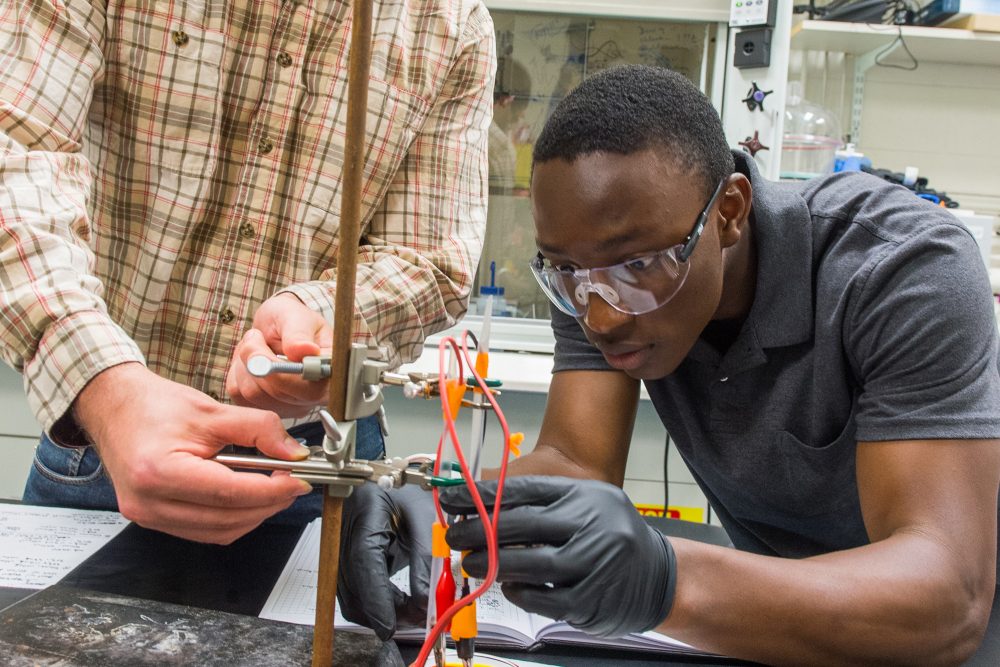

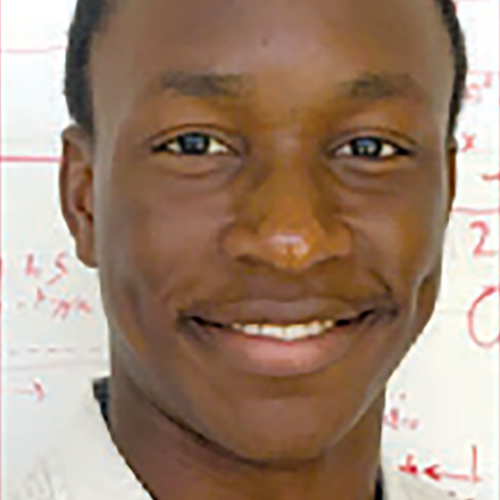 |
Oluwatomisin Adelusi ’18Mechanical Engineering Advisor: Jeffrey Grossman, Professor, Materials Science and EngineeringDirect Supervisor: David Zhitomirsky, Postdoctoral Fellow, Research Laboratory of ElectronicsSponsor: Alfred Thomas Guertin ’60 Solar thermal fuels Azobenzene is a molecule that can store energy when exposed to UV light and that releases this energy when heated. Scientists have discovered that polymerizing azobenzene allows it to charge efficiently. My goal for my summer project was to ensure that a polymerized version of azobenzene released sufficient heat during discharge. As part of the process, I charged the molecule and monitored its heat release during discharge. After several trials, the experimental result matched its predicted value nearly perfectly. I enjoyed this experience mainly because it was my first time working in a wet lab. Additionally, during weekly lab meetings, I listened to graduate students and postdocs present their projects. The projects that had energy applications were especially fascinating. Because of this experience, I have decided to study materials science and engineering at MIT. I now understand that, sometimes, microscale solutions to energy problems are more beneficial than large-scale sweeping solutions. |
 |
Neil Aggarwal ’18Materials Science and Engineering Advisor: Ahmed Ghoniem, Professor, Mechanical EngineeringDirect Supervisor: Kevin Kung, Graduate Student, Biological EngineeringSponsor: Tata Center for Technology and Design Renewable energy for rural development My goal was to design and implement the measurement and ignition systems of a biomass torrefaction reactor. Farmers in rural areas can use this reactor as a cleaner as well as a more economical method of disposing biomass waste. The product of the reaction is charcoal, which can be sold as cooking fuel or fuel for co-firing plants. I utilized hardware with scripts I wrote in Python to collect temperature and pressure data to optimize the reactor. I enjoyed the independence I had in pursuing my ideas and going at my own pace. At the same time, I appreciated that my supervisor was accessible to answer questions and guide me. Learning about the environmental and economical implications of this research gave me an understanding of the scope of today’s energy issues and how to think critically about them. It has also motivated me to be more active in energy-related events at MIT. |
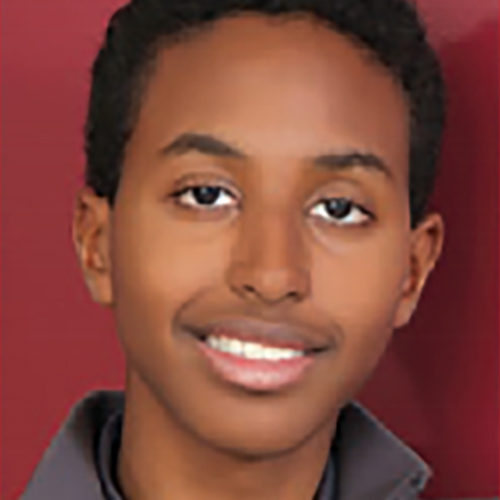 |
Imraan Alas ’17Biological Engineering Advisor: Angela Belcher, James Mason Crafts Professor, Biological Engineering and Materials Science and EngineeringDirect Supervisor: Xunpei Liu, Postdoctoral Fellow, David H. Koch Institute for Integrative Cancer ResearchSponsor: Shell International Calcium carbonate encapsulated DNA micro-sensors The goal of this project was to devise a protocol for increasing the encapsulation efficiency and retaining the temperature sensitivity of our DNA sensor. Over the course of this UROP project, we have found reagents that increase the encapsulation efficiency while removing the temperature sensitivity, and vice versa. In my UROP experience, I enjoyed the flexible approach of the methodology, in which we had a concrete end result that we could visualize. While the research was interesting, I feel that it was more the approach rather than the field that I found interesting. One key piece of information that I took away from this UROP project was that various fields and even various labs within the same field have very different methods for solving problems, which was interesting to me from a research standpoint. |
 |
Lisa Archibald ’16Chemical-Biological Engineering Advisor: Patrick Doyle, Professor, Chemical EngineeringDirect Supervisor: Ankur Gupta, Graduate Student, Chemical EngineeringSponsor: John C. Hardwick ’92 Investigation of oil in water nano-emulsions for enhanced oil recovery Recently, Eni S.p.A has been interested in investigating the use of nano-emulsions for application in enhanced oil recovery, an important area due to diminishing oil reserves. Nano-emulsions are nano-scale, liquid-in-liquid suspensions. Breaking up the droplets with sound waves with a device called an ultrasonicator is one method of producing nano-emulsions. Although ultrasonicators are commonly used to make nano-emulsions, the most efficient way to use this device has yet to be explored. My project aimed to fill this knowledge gap in ultrasonicator usage by investigating how sample size and distance from the sonication horn affect nano-emulsion droplet size. My research experience this summer gave me the confidence to work independently on a project. Planning the experiments and collaborating in an interdisciplinary manner with my co-workers were very fulfilling. Energy was not a field I had considered before this summer, but this experience made me consider future work in the energy industry. I am looking forward to continuing my work in the Doyle lab this school year and applying for a Super UROP position. |
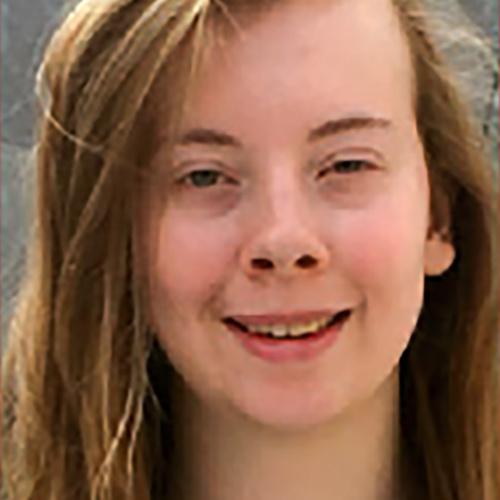 |
Julia Belk ’17Electrical Science and Engineering Advisor: David Perreault, Associate Department Head and Professor, Electrical Engineering and Computer ScienceDirect Supervisor: Alex Hanson, Graduate Student, Electrical Engineering and Computer ScienceSponsor: Lockheed Martin Investigation of high-frequency power magnetic materials and components Power converters are a critical component of modern electrical and electronic systems, and there is an ongoing effort to make them smaller, cheaper, and more efficient. One way to do this is by increasing the operating frequency of the circuit. However, that is hindered by a lack of necessary information about magnetic materials in the 2–30 MHz range. My research focused on understanding how to design magnetic circuit components (inductors and transformers) for use in high-frequency power converters. We gathered data on 15+ materials and formulated new heuristics for material performance in this range. We found that significantly smaller and more efficient magnetic components can be realized by using previously uncharacterized materials operating at high frequency. This Energy UROP opportunity was a great introduction to doing energy research, and next year I will continue to work with Professor Perreault on another energy project. This time I will be concentrating on a project related to the electrical grid. |
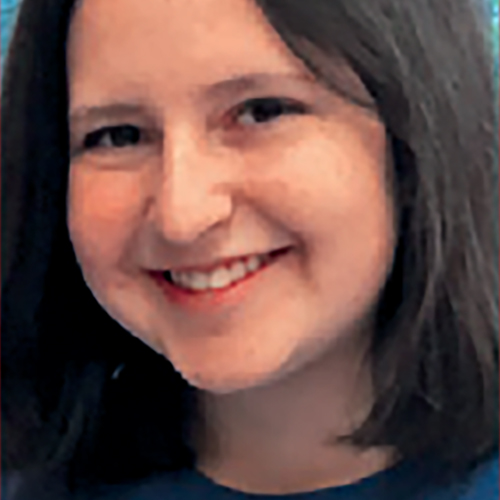 |
Reva Butensky ’18Materials Science and Engineering Advisor: Kristala Jones Prather, Associate Professor, Chemical EngineeringDirect Supervisor: Jason Boock, Postdoctoral Associate, Chemical EngineeringSponsor: Shell International Metabolic engineering for optimized 4-methyl-pentanol synthesis This summer I worked to optimize production of 4-methyl-pentanol, a branched medium-chain alcohol and a promising, viable biofuel. To this end, I assessed and modified aspects of a ten-step de novo modularized metabolic pathway developed by the Prather Lab. Using high-proficiency liquid chromatography and newly developed gas chromatography methods, I determined the buildup of an intermediate product, isobutyrate, to be a bottleneck in biofuel production and have since identified and evaluated alternative enzymes to alleviate this bottleneck. These key findings will ultimately contribute to pathway optimization. Engaging directly with my advisor, postdoctoral supervisor, and graduate students to troubleshoot a multidisciplinary project was extremely gratifying. This UROP project provided me with the opportunity to explore one of my various energy interests through a department other than my own, and gave me further insight into the changing status of renewable fuels and the role research and development play—and must play—in delivering sustainable energy solutions. |
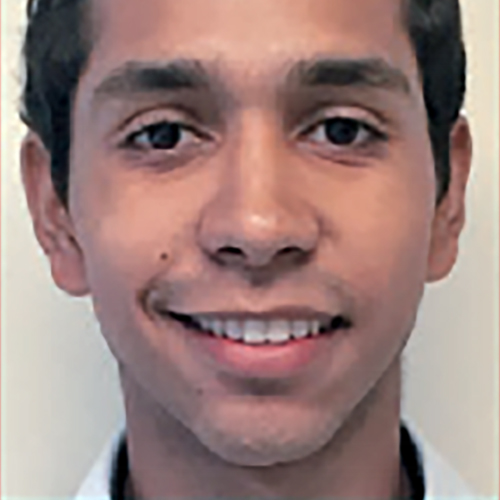 |
Julian Chacon-Castano ’17Electrical Science and Engineering Advisor and Direct Supervisor: Richard Fletcher, Research Scientist, D-Lab and Media Arts and SciencesSponsor: Tata Center for Technology and Design Induction stove control optimization The presence of reliable AC power is still missing in developing areas, leading to dependence on unhealthy biomass alternatives. This project’s aim was to provide a low DC voltage induction stove for people in these areas. My work on the project was to construct a stove from a design made by a graduate student here. I learned power electronics theory for the circuit and acquired a set of new soldering techniques. I enjoyed being able to have hands-on experience the whole summer; it made me feel like a true engineer as I had to machine components when something didn’t go as planned. This experience gave me an appreciation for access to reliable commodities, such as electricity. It also opened me up to the world of energy engineering and how interesting and easy it could be to solve many of our most pressing problems today with ingenuity and focus. |
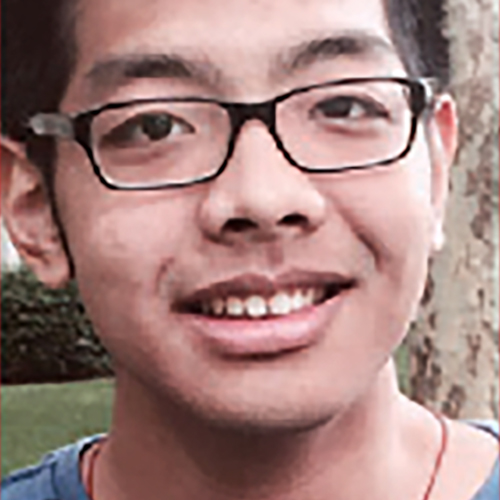 |
De Xin Chen ’18Materials Science and Engineering Advisor: T. Alan Hatton, Ralph Landau Professor; and Director, David H. Koch School of Chemical Engineering PracticeDirect Supervisor: Xianwen Mao, Graduate Student, Harvard UniversitySponsor: Alfred Thomas Guertin ’60 2D nanosheet/polymer hybrid materials for catalysis, separation, and energy storage and conversion My project’s goal was to use conductive polymer hydrogel, i.e. polypyrrole (PPy) and polyaniline (PAni) hydrogel, to absorb dye from contaminated wastewater discharge and recycle the hydrogel through desorbing the dye in a solvent, preferably water. Over the summer, I conducted absorption and desorption experiments with PPy and PAni hydrogel, made from different recipes, determining the recipe that would yield the best result. I particularly enjoyed the data analyzing part of the experiment because merely running the experiment reveals nothing. This project changed the way I thought about energy topics. I did not realize the direct correlation that this experiment had with energy until I discovered that the application of the hydrogel could save the world a lot of money spent on cleaning up contamination. Making the connection encouraged me to pursue a career in energy. |
 |
Tianye Chen ’18Electrical Engineering and Computer Science Advisor and Direct Supervisor: James Bales, Instructor and Associate Director, Edgerton CenterSponsor: John C. Hardwick ’92 Optimizing the electrical system for a four-wheeled solar car In my research project with the MIT Solar Electric Vehicle team, we built and tested our first four-wheeled car, Arcturus, for the 2015 Bridgestone World Solar Car Challenge, a grueling seven days across the Australian outback, covering over 2,000 kilometers. We had to overcome many electrical engineering challenges in the process. One challenge was the calibration of the car’s regenerative braking system. Regenerative braking spins the wheel of the car backwards, allowing the motor to become a generator that charges the battery pack. Sudden and forceful regenerative braking pushes too much current through the motor controller, which damages internal parts. The challenge was to determine the maximum amount of regenerative braking the motor controller and battery can handle. Other challenges included adhering the solar cells to the car, testing the maximum power point trackers (MPPT), and building robust attachment systems for the MPPT boxes that are housed in the underside of the car. The car was completed, tested, and shipped off to Australia for the race. |
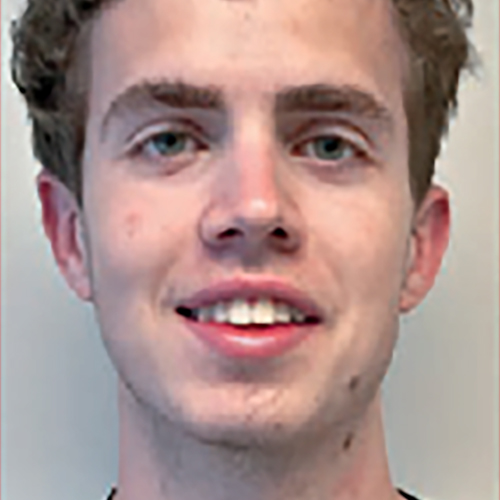 |
Ian Chesser ’16Materials Science and Engineering Advisor and Direct Supervisor: Michael Demkowicz, Visiting Associate Professor, Materials Science and EngineeringSponsor: BP Simulating mechanical properties of copper-niobium nano-composites Copper-niobium (Cu-Nb) nano-composites are a promising next-generation structural material with high strength and exceptional heat and radiation tolerance. Working in the Demkowicz Lab, I simulated the compression of Cu-Nb nano-composites to gain insight into interfaces that are stable under extreme deformation. To get a sense of “extreme” deformation, imagine stretching a nickel over a kilometer in length. When millimeter thick Cu-Nb layers are compressed six orders of magnitude to the nano-scale, they develop a surprisingly stable interface character that confers desirable properties to the bulk material. I am working on identifying the exact nature of this stable interface, and have learned a great deal about simulation and mechanics of materials in the process. Interface engineered Cu-Nb composites could find applications in spacecraft and nuclear power plants, and my work helps further our understanding of these materials. |
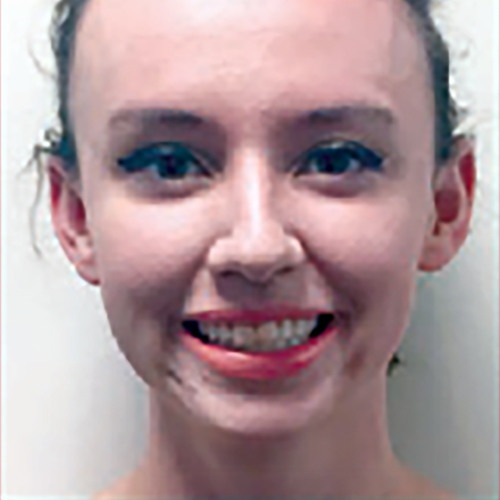 |
Chelsea Chitty ’18Materials Science and Engineering Advisor and Direct Supervisor: Ronald G. Ballinger, Professor, Nuclear Science and Engineering and Materials Science and EngineeringSponsor: BP Pitting and cracking in iron alloys The goal of my project was to determine whether plastic strain affects the corrosion rate of X65 pipeline steel, and if it does, how it affects it. In accomplishing this goal, we developed an experimental procedure to test this question, as well as prepared samples to be tested. We have begun testing and collecting results and still need to conduct more tests and analyze our results. I really enjoyed learning about experimental procedures and the techniques used to analyze materials. I especially enjoyed examining the microstructure of the materials. I have always wanted to pursue energy as a career, and this project showed me the many different fields that contribute to energy research. This was a really excellent and valuable experience that taught me a lot about the field of materials science and also what goes into conducting research. |
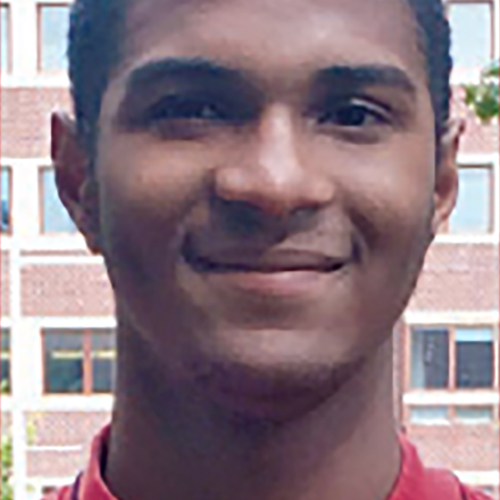 |
Cedric Delmy ’18Mechanical Engineering Advisor: Alexander Slocum, Professor, Mechanical Engineering and Director, Experimental Study GroupDirect Supervisor: Maha Haji, Graduate Student, Mechanical EngineeringSponsor: Shell International Continuous seawater uranium harvester With the world’s need for energy increasing drastically, and the land reserves of uranium decreasing similarly, extraction of uranium from seawater has proved to be a great harvesting alternative to overcome this problem. My assignment this summer was to design and build a 1/50th scale prototype of a symbiotic uranium harvester that is economically viable or that brings the cost of seawater uranium close to the price of the land-harvested uranium that is currently used. To achieve this goal, my lab partner and I were given three designs to examine, and we went through a three-step process: design analysis, cost analysis, and prototype building. I particularly enjoyed applying what I learned in class and learning how to design the harvester. The increasing number of energy-based research projects launched along with the interconnection of energy studies with various other fields like engineering and chemistry awakened my interest in energy, leading me to consider pursuing the Energy Studies Minor. |
 |
Jacob Del Priore ’18Mechanical Engineering Advisor: Evelyn Wang, Associate Professor, Mechanical EngineeringDirect Supervisor: Daniel Preston, Graduate Student, Mechanical EngineeringSponsor: Chevron Fabrication and characterization of nanostructured surfaces for scalable condensation heat transfer enhancement This summer, I worked in the Device Research Lab analyzing nanostructure layers in order to increase efficiency in steam power plants. More specifically, I fabricated samples of both copper oxide and zinc oxide on various steel, silicon, and copper substrates and analyzed the scalability of these surfaces. This fabrication process gave me experience in wet chemistry processes, such as electroplating and nanostructure growth, along with using a scanning electron microscope. Within the scope of this project, I also designed and ran an impurity test setup for lab chemicals that will be used to measure the amount of degraded nano-structure particulate within liquids of varying pH levels. The impact of this project is far reaching, as steam power currently produces roughly 90% of the world’s electricity, and implementing these nanostructured super-hydrophobic surfaces into steam power plants could increase electricity output of the same raw materials as much as 5%. |
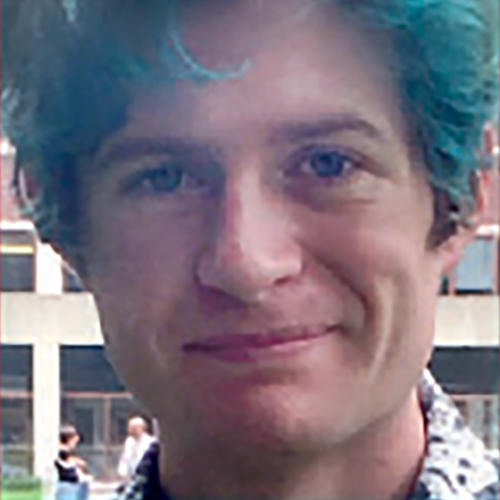 |
Christopher Desnoyers ’17Electrical Engineering and Computer Science Advisor and Direct Supervisor: Richard Fletcher, Research Scientist, D-Lab and Media Arts and SciencesSponsor: Tata Center for Technology and Design Low-cost mobile optical particle monitor My project’s goal was to provide an affordable, easy-to-use particle monitor to gather air quality data in areas where wood-burning stoves are used. My supervisor and I designed and built a prototype sensor, but are not yet done testing it. I enjoyed having the opportunity to work on so many different aspects of a single project. There were design challenges involving mechanical components, analog circuitry, printed circuit board (PCB) layout, and software development. As a student, it felt great to gain some practical skills I had not learned in the classroom, such as how to use wood-shop tools and design a PCB. My research made me more interested in making sensors that do not provide any new functionality, but may have more widespread applications than their predecessors by virtue of being cheaper and lower powered. |
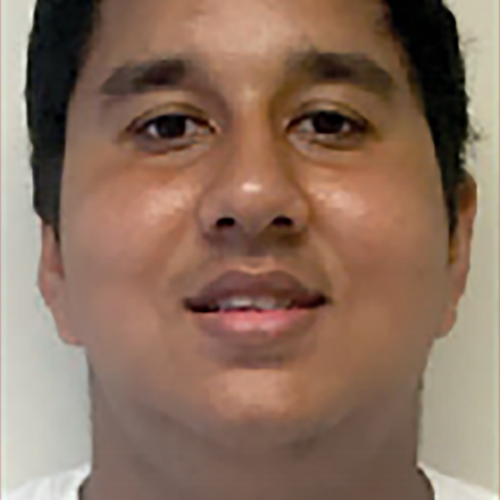 |
Stephen Gaffley ’18Mechanical Engineering Advisor: Fikile Brushett, Assistant Professor, Chemical EngineeringDirect Supervisor: Jarrod Milshtein, Graduate Student, Materials Science and EngineeringSponsor: Chevron Demonstrating immiscible flow to aid in the investigation and design of a membrane-less redox flow battery cell My project was to model a co-laminar flow channel sealed in a highly resistant plastic mock cell. A side goal of working on this project was to become proficient using different machining apparatuses that will be important to my learning and understanding of what it means to be a mechanical engineer. I have learned how to use machines—from a tape cutter to a CNC mill to a water jet cutter. I really enjoyed participating in the interdisciplinary work between mechanical engineering, chemical engineering, and materials science. Designing and building the model taught me a lot about the intricacies of building and development. I found strong motivation in the purpose of this alternative energy storage project. I enjoyed how varied the work could be on just one project. I have learned the importance of further research on current findings and developments in energy research. |
 |
Cali Gallardo ’17Mathematics Advisor: Nicholas Fang, Associate Professor, Mechanical EngineeringDirect Supervisor: Nicholas Viard, Postdoctoral Associate, Mechanical EngineeringSponsor: Lockheed Martin Lightweight composite material with tunable acoustic absorption The goal of this project was to develop a material that is soundproof for selective frequencies. This summer, I helped create the experimental setup and optimize the design and manufacture of sample materials. Through this project, I was able to gain a wide variety of experiences in engineering research, including programming, experimental design, experimental measurement, and materials fabrication. The research also introduced me to the study of acoustics, a branch of physics I was previously unfamiliar with. Through this project and the MITEI program, I discovered that energy research can take on a great many different forms. As a result, I now feel inspired to seriously consider energy as a career. |
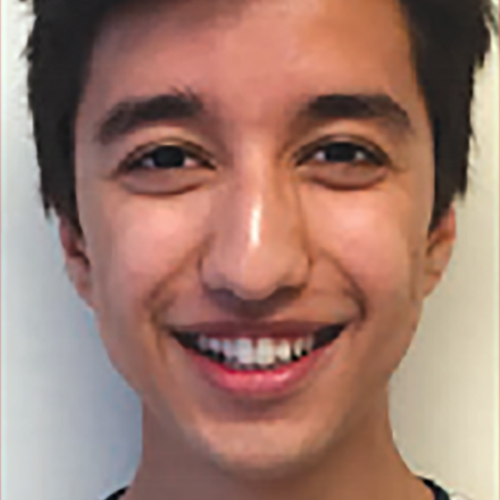 |
Aaron Gonzalez ’18Chemical Engineering Advisor: Ahmed Ghoniem, Professor, Mechanical EngineeringDirect Supervisor: Kevin Kung, Graduate Student, Biological EngineeringSponsor: Tata Center for Technology and Design Biomass torrefaction for rural energy development The overall goal of the project was to analyze the composition of the volatile gases that were emitted from the torrefaction of different types of biomasses such as cornhusks, rice husks, and pine shavings. Torrefaction is the burning of biomass at around 300°C to produce a solid energy-dense substance called char. This char can be used as an energy source for heating in many developing countries. I enjoyed learning about chemical modeling, processes, and application as well as gaining hands-on experience in reactor design. My Energy UROP project helped to develop my interest in the energy field and has given me insight into what I want to pursue for a career. |
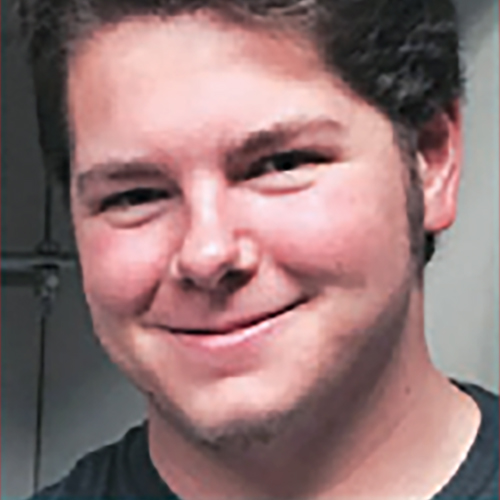 |
Samuel Gordon ’18Chemistry Advisor: Gabriela Schlau-Cohen, Assistant Professor, ChemistryDirect Supervisor: Ashley Compton, Graduate Student, ChemistrySponsor: John C. Hardwick ’92 Role of PSBS in quenching excess energy in photosynthetic processes Originally, the goal of my project was to look at the mechanism by which the plant protein PSBS protects cells from the production of singlet oxygen as a byproduct of photosynthesis. To this end, I was able to create a model membrane system that will give an accurate analog in the lab for the cell membrane where the photosynthesis occurred. I ran into a significant barrier in creating the model membrane that stagnated progress, and I was not able to get into studying PSBS. I loved my time in the lab, and particularly enjoyed learning techniques that will benefit me in the future. As a result of this UROP project, I can definitely see myself working in the photosynthesis community in the future. We can still learn a lot from photosynthesis—for example, studying its remarkable efficiency. |
 |
Jessie Hsiao ’18Chemical Engineering Advisor: Fikile Brushett, Assistant Professor, Chemical EngineeringDirect Supervisor: Steven Brown, Graduate Student, Chemical EngineeringSponsor: Jerome I. ’51 ScD ’56 and Linda Elkind Investigation of the electrocatalytic reduction in carbon dioxide The increase in carbon dioxide (CO2) concentration in the atmosphere sparks a growing interest in converting the excess CO2 electrochemically into more useful industrial products such as carbon monoxide, methane, ethylene, ethanol, and propanol. While gold is known for being the most efficient metal catalyst to reduce CO2, its high price means it is not cost-effective to use it for CO2 reduction. The proposed solution is to create a new gold-plated-copper bimetallic catalyst that is both efficient in reducing CO2 and is cost effective. By the end of the summer, I developed AuNTs (gold nanotubules) that exhibited excellent efficiency and durability in reducing CO2, and presented my research at the American Chemical Society. I believe energy research is becoming increasingly important as the result of the expanding demand for energy and changing climate, and I see CO2 reduction as a key component in building a sustainable future. |
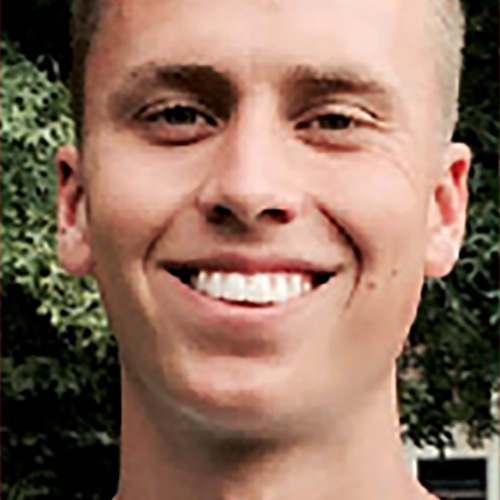 |
Nathaniel Johnson ’18Mechanical Engineering Advisor: John Reilly, Senior Lecturer, Sloan School of ManagementDirect Supervisor: Jennifer Morris, Research Scientist, MITEISponsor: BP Representing uncertainty and analyzing outcomes of the Integrated Global Systems Modeling Framework created by the Joint Program on Science and Policy of Global Change This summer, I worked on forecasting GDP growth as part of a large uncertainty study at the Joint Program on the Science and Policy of Global Change. The Joint Program uses the Integrated Global Systems Modeling Framework (IGSM) model to predict the unavoidable effects of climate change. The results of this model are used to inform public and private decisions to help mitigate these environmental changes. The model is data driven, using historical economic and earth systems data. My research focused on the economic side, specifically upon measuring the ranges of uncertainty in GDP. I aggregated and analyzed historic data in order to produce probability density functions for GDP, which were then incorporated into the model. In addition, I tested various methods for forecasting GDP growth, taking into account correlation between regions and other economic factors. My UROP project built on my interest in environmental- and energy-related issues. It also exposed me to many new economic concepts. It was a pleasure to work at the Joint Program. |
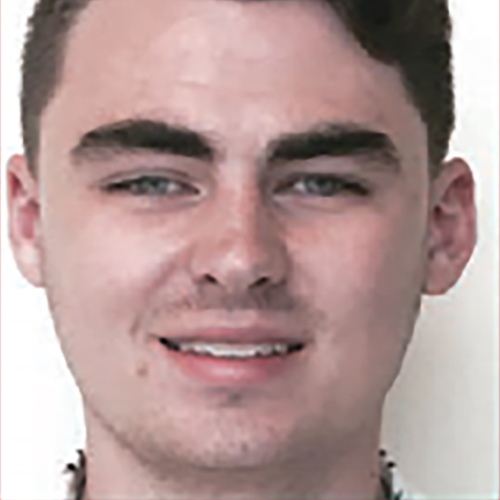 |
Sean Kropp ’17Aeronautics and Astronautics Advisor: Franz-Josef Ulm, Professor, Civil and Environmental EngineeringDirect Supervisor: Konrad Krakowiak, Research Scientist, Civil and Environmental EngineeringSponsor: Chevron Quantifying brittleness and ductility of hydrocarbon-bearing rocks at sub-micron scale For my project this summer, I worked in the Laboratory for Materials in Extreme Environments under Professor Ulm and Research Scientist Konrad Krakowiak as a team with Energy UROP students June Park and Riley Ledezma. Together, we were tasked with finding how the physical properties of shale gas change with rising temperatures. In order to do that, we had to design a stage that would change the temperature of the shale without too much compliance in any direction, while still staying within the limited space of the scratch and indentation machine. By the end of the summer, we had a 3D printed part with a functioning heater and feedback controls to heat the sample to 100° Celsius. From here, we also found the compliance of the system to start the actual experimentation. I enjoyed working toward something bigger than myself. The project helped me see how much good I could do in the world of energy. I will not be pursuing a career in the energy field because my heart still lies in aerospace, but I will constantly be thinking about energy-efficient methods in my work. |
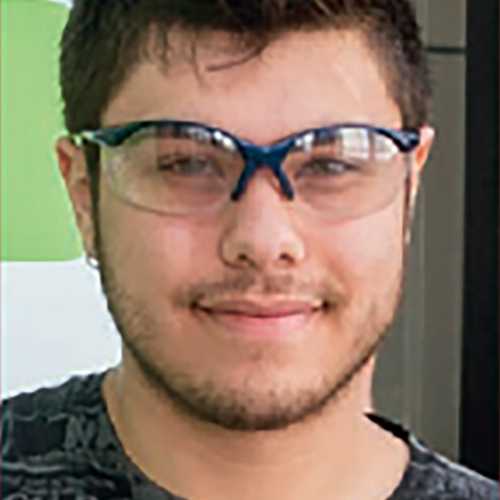 |
Riley Ledezma ’16Aeronautics and Astronautics Advisor: Franz-Josef Ulm, Professor, Civil and Environmental EngineeringDirect Supervisor: Konrad Krakowiak, Research Scientist, Civil and Environmental EngineeringSponsor: Chevron Quantifying brittleness and ductility of hydrocarbon-bearing rocks at sub-micron scale My UROP project was aimed at quantifying the brittleness and ductility of hydrocarbon-bearing rocks at a sub-micron scale. In order to do this, my fellow UROP students and I had to develop a test stand, which held our shale sample in place while heating it up to a given temperature. By the end of the summer, we were able to design the stand and began preliminary testing in order to calibrate the system for future tests and data analysis. Overall, the most enjoyable part of the experience was the vast pool of knowledge and explanations provided to us by our advisor. I am more inclined now to pursue a career in energy as a possible alternative to my original plans. My UROP research helped me appreciate the complexity of a seemingly simple topic of energy. As a student, this UROP helped me see how majoring in course 16 (aerospace engineering) could open up possibilities to other areas of studies. |
 |
Belinda Liu ’18Mathematics, Wellesley College Advisor and Direct Supervisor: Dan Sweeney, Research Scientist, D-LabSponsor: Friends of MITEI Characterizing the chemical kinetics of biomass pyrolysis Our goal this summer was simple: to design and build low-cost air-quality sensors. These sensors will be implemented into field research on cook stoves in Uganda. Ideally, they will help encourage more widespread adoption of more efficient cook stoves, which can reduce fuel usage by 30–60% and aid in preventing a variety of health and environmental problems. I also worked on a separate project that involved analyzing agricultural waste for potential use in charcoal, as a wood alternative. As a math major, these projects were really my first foray into more immediately practical research in the form of engineering, and I have enjoyed being able to present tangible results. This research has also highlighted energy and conservation as major points of interest in my future studies, and inspired me to keep sustainable development and a sense of the larger world around me at the forefront of my mind. |
 |
Caroline Liu ’18Materials Science and Engineering Advisor and Direct Supervisor: Niels Holten-Andersen, Assistant Professor, Materials Science and EngineeringSponsor: Lockheed Martin Understanding the mechanics of bio-inspired metal-coordination polymers for the development of tough underwater coatings This summer, I analyzed the optical and mechanical properties of lanthanide-coordinating bonds in different polymer complexes that mimicked the complexes found in mussel byssal threads. I combined various lanthanide salts such as europium (Eu) and terbium (Tb) with polymers such as alginic acid and terpyridine to form gels and beads that were strong and self-repairing and had tunable light-emitting properties when subjected to UV light. Studying these newly discovered complexes and their response to environmental stimuli brought me closer to developing a tough, eco-friendly polymer coating for the energy industry for applications on pipelines or structures for offshore wind power. I am so thankful for the Energy UROP for giving me an opportunity to not only pursue my passion for advanced materials, but also to help me recognize the importance of these materials in the energy industry. I’ve always been interested in energy research, and I’m excited to continue my work to contribute to the field. |
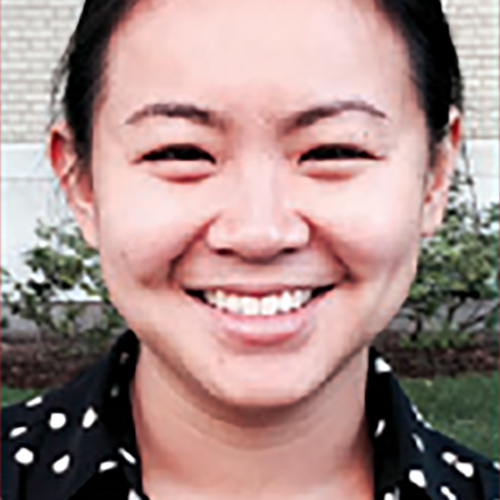 |
Nancy Lu ’16Chemical Engineering Advisor: Martin Bazant, Professor, Chemical EngineeringDirect Supervisor: Sven Schlumpberger, Graduate Student, Chemical EngineeringSponsor: Alfred Thomas Guertin ’60 Desalination by shock electrodialysis My project for this summer was to create a more efficient and scalable desalination device using shock electrodialysis through a porous medium based on an existing device. I built the device with a different sized porous medium and tested its effectiveness in desalinating. I enjoyed being in charge of this project and it has made me more aware of energy topics in relation to water desalination and the drought in California. In addition, this UROP project made me consider a possible career in energy consulting. |
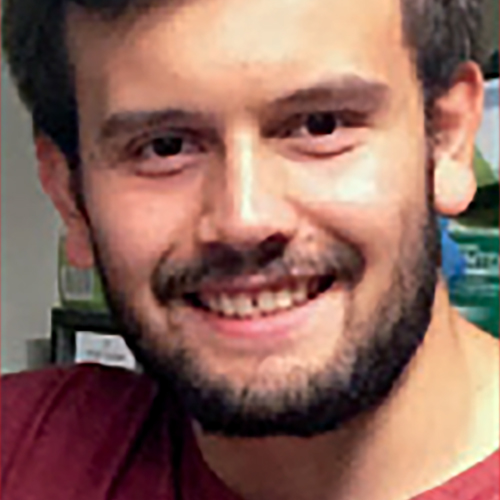 |
Max Malinowski ’16Mechanical Engineering Advisor: Anastasios Hart, Associate Professor, Mechanical EngineeringDirect Supervisor: Jamison Go, Graduate Student, Mechanical EngineeringSponsor: Lockheed Martin High-speed additive manufacturing of composite structures My project’s goal was to better characterize the dynamics of fused deposition modeling (FDM) additive manufacturing, and the effects on the performance of FDM 3D printers. I accomplished this goal, getting quantitative results for printer extrusion rates, movements, and speeds as well as a qualitative understanding of how these dynamics affect the accuracy and performance of the printer. What I enjoyed most about the experience was becoming more comfortable with Matlab, as well as being able to implement basic physics concepts to gain such valuable insights. My UROP experience bolstered my interest in pursuing 3D printer development as a career. This has also been my first experience with research, which has been eye-opening in helping to determine whether or not I’d like to attend grad school. |
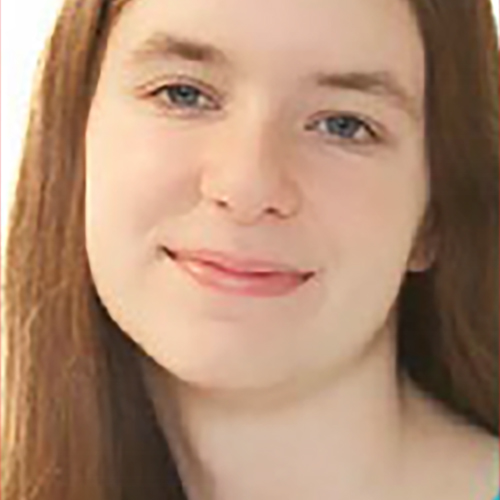 |
Elizabeth Mittmann ’18Mechanical Engineering Advisor and Direct Supervisor: James Bales, Instructor and Associate Director, Edgerton CenterSponsor: John C. Hardwick ’92 Building, testing, and improving the MIT Solar Electric Vehicle team’s solar car In my MITEI Energy UROP, I worked with the MIT Solar Vehicle team to design, build, and test a solar car for the 2015 Bridgestone World Solar Car Challenge. Specifically, I worked with the mechanical system as we created brake, suspension, and steering sub systems for our first four-wheeled car. I enjoyed getting a hands-on feel for the engineering design, build, and test process and learning more about solar cars from more senior members of the team. Through this UROP project, I learned more about energy at MIT, and know it is an option I could pursue in the future. My UROP project led me to think more about the efficiency of objects around me in day-to-day life, and I learned a lot about machining, assembly, and the various materials used in a solar car. |
 |
Alexander Mok ’18Mechanical Engineering Advisor: Rohit Karnik, Associate Professor, Mechanical EngineeringDirect Supervisor: Piran Kidambi, Postdoctoral Associate, Mechanical EngineeringSponsor: Lockheed Martin Transport across atomically thin membranes This summer, I worked to find a scalable, cost-effective method of creating atomically thin 2D materials like graphene that allow for selective molecular transport behavior at a minimal energy cost. In the lab, I transferred graphene sheets made by my supervisor from copper foil onto membranes and tested how defective the sample of graphene was through liquid and gas transport experiments. By the end of the summer, we optimized the variables to create the least defective graphene sheets. The most rewarding part of my UROP project was understanding the real-world significance of and the physical explanation for my results. Thanks to this UROP project, I was able to experience the problems researchers face every day, something that I cannot learn in the classroom. |
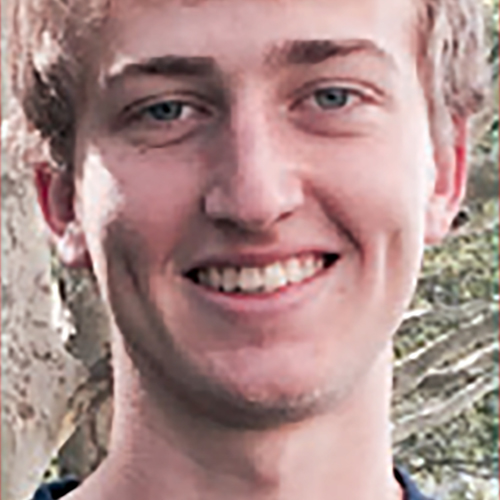 |
Daniel Newman ’17Chemical Engineering Advisor: Fikile Brushett, Assistant Professor, Chemical EngineeringDirect Supervisor: Emily Carino, Postdoctoral Associate, Chemical EngineeringSponsor: John C. Hardwick ’92 Understanding the impact of carbon surface chemistry on side-processes in non-aqueous electrolyte systems for redox-flow batteries The goal of my project was to understand the surface chemistry of glassy carbon electrodes and the side processes that happen in non-aqueous electrolyte systems. This research could lead to a more efficient redox-flow battery. I enjoyed how I ran the experiments from start to finish, from preparing the solutions to working up the data. My UROP research solidified my intention to pursue a career in energy. Whether or not I wish to pursue a career in electrochemistry remains to be seen, but I do think I will go into a career that will help meet the world’s energy demand. I have realized how important efficient energy storage can be and how broad a field the energy industry is. This makes me feel confident that I will find my own niche after graduation. This experience has taught me many things I had not previously been exposed to in the classroom about electrochemistry. |
 |
Quan Nguyen ’17Chemical-Biological Engineering Advisor: William Tisdale, Assistant Professor, Chemical EngineeringDirect Supervisor: Mark Weidman, Graduate Student, Chemical EngineeringSponsor: Dan ’68 and Sally Harris PbS nanocrystal monodispersity by optimization of reaction condition Quantum dots (QDs), nanocrystals made out of semiconductor materials, are the next generation of solar cells. Their flexible band gap has increased light absorption, mechanical flexibility, and ease of manufacture. The goal of this project was to produce brighter, more ordered, and more compact PbS nanocrystal films. Based on previous work, I successfully managed to optimize the reactions of synthesis and ligand exchange to produce both more efficient and stable nanocrystal films for solution processability. Particularly, I learned that my patience and passion would help me find the solution no matter how hard it was or how many times I had to redo the experiment to achieve the desired results. This project has really increased my energy knowledge. I was impressed with how little tiny particles synthesized in the laboratory could be utilized in many real-life applications such as solar batteries or LED televisions. Energy is one of the areas that I will pursue in the future. Besides all the fascinating procedures and excellent results, I am very lucky to have a dedicated supervisor. |
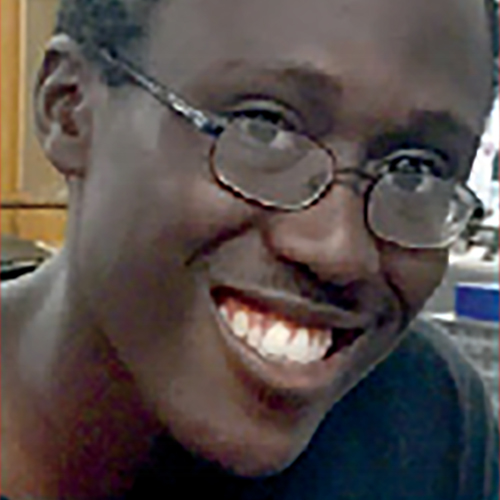 |
Akwasi Owusu-Akyaw ’17Mechanical Engineering Advisor: James Kirtley Jr., Professor, Electrical Engineering and Computer ScienceDirect Supervisor: Edwin Fongang, Graduate Student, Electrical Engineering and Computer ScienceSponsor: Lockheed Martin Improving motor technology using reactive power The goal of this UROP project was to create a two-phase AC induction motor that contained about the same amount of windings as a quarter horsepower single-phase motor, but with an increased power factor. This summer, we were finally able to fabricate a working two-phase motor that can run at 108 V RMS. Having a motor that I fabricated work very well was the highlight of my UROP experience. In addition, this experience has shaped my career path for life even further. Because of it, I am now more interested in the field of energy generation, specifically in powertrain engineering for electric automobiles. Not only is it very interesting, but this field brings substantial improvement to society, and I would like to be involved. |
 |
June Park ’17Chemical-Biological Engineering Advisor: Franz-Josef Ulm, Professor, Civil and Environmental EngineeringDirect Supervisor: Konrad Krakowiak, Research Scientist, Civil and Environmental EngineeringSponsor: Chevron Quantifying brittleness and ductility of hydrocarbon-bearing rocks at sub-micron scale To gain a better understanding of shale formation and mechanical behavior, the “brittle-to-ductile” transition of shale needed to be systematically studied at submicron scale with novel micro-indentation and scratching techniques. For this purpose, I worked on developing an innovative temperature-controlled scratch-indentation platform at the Laboratory for Materials in Extreme Environments (X.Lab). The apparatus consists of a 3D printed stand and proportional-integral-derivative (PID) temperature controller with a thermocouple feedback system wired via Arduino, a popular open-source electronic prototyping platform, and programmed in MATLAB (a high-performance language for technical computing). This project uncovered a wonderful opportunity for me to work independently in a multidisciplinary environment. As a chemical engineer, I had not worked with electronics or 3D modeling before, but through this Energy UROP project, I picked up skills I thought I was not capable of learning on my own. I would like to thank MITEI for introducing me to brilliant people, teaching me to work in multi-disciplinary research, and helping me become passionate about energy research. |
 |
Eric Ponce ’17Electrical Science and Engineering Advisor: Franz-Josef Ulm, Professor, Civil and Environmental EngineeringDirect Supervisor: Konrad Krakowiak, Research Scientist, Civil and Environmental EngineeringSponsor: Shell International Energy consumption focused educational robotics The goal of my project was to develop an educational robot aiming to teach hands-on engineering principles and give real-world intuition of energy consumption and conservation to college-level students. We successfully developed the robot and energy consumption reporting software that accurately measures voltage and current to give students feedback on circuit efficiency. My favorite part of the experience was working with faculty and my peers to create a tool that I think will successfully give students an opportunity to learn about circuits outside of the traditional classroom setting. The various problems associated with energy management, storage, distribution, and conservation all played a role in my project, albeit on a small scale, and this UROP project convinced me to continue to learn how to tackle these problems. |
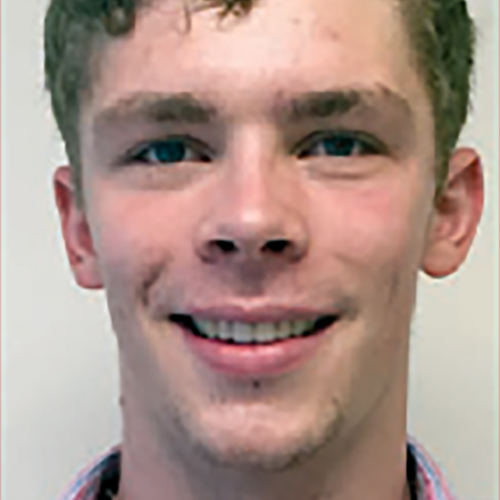 |
Samuel Ravnaas ’18Nuclear Science and Engineering Advisor and Direct Supervisor: Michael Golay, Professor, Nuclear Science and EngineeringSponsor: Lockheed Martin Offshore floating nuclear plant design concept The goal of the offshore floating nuclear plant design concept is to implement existing nuclear technology into a form factor commonly used by oil platforms and to use the offshore location of the plant to its strategic security, logistical, and efficiency advantages. My part in this project was to assess existing practices used in the oil and gas industry, the mining industry, and the U.S. Navy to provide reasonable solutions to many of the supply and security issues that exist on an offshore facility. I enjoyed working with highly knowledgeable, highly experienced people in the nuclear industry. This UROP project has piqued my curiosity for energy system design and implementation and the social repercussions of energy to the point where I am considering a career in energy. As a student, this research experience has helped me learn how to clearly and concisely present my thoughts and ideas more eloquently. |
 |
Hyun Jee Rhee ’18Materials Science and Engineering Advisor: Gregory Stephanopoulos, Professor, Chemical EngineeringDirect Supervisor: Steven Edgar, Graduate Student, Chemical EngineeringSponsor: Friends of MITEI Improving biofuel production via respiratory protection My project involved using the non-mevalonate pathway (MEP) to produce isopentenol. We established Azotobacter vinelandii as the host organism for this process. Throughout the summer, I worked to transform and make various genetic modifications to A.vinelandii. It was helpful to work full-time during the summer, instead of part-time as I do during the semester, since it allowed me to make significant progress with the project, as well as gain a better understanding of the research project as a whole. Working on an energy project encouraged me to become more conscious of the energy problems and the biological solutions that can help to solve these problems. I find being able to associate these energy crises as problems that can influence all of us, as well as investigating various solutions around us, to be important steps in developing lasting solutions. |
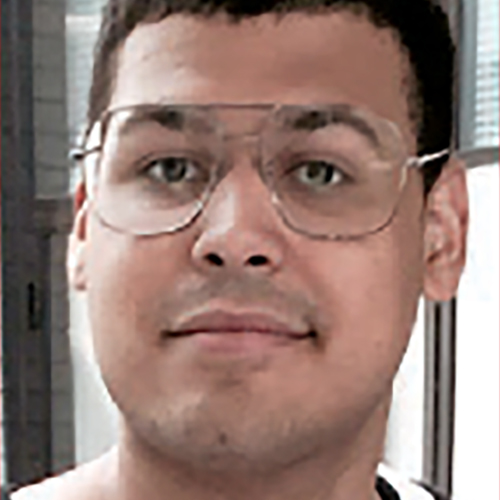 |
Nicholas Rivera ’16Physics Advisor: Marin Soljačić, Professor, PhysicsDirect Supervisor: Ido Kaminer, Postdoctoral Fellow, Research Laboratory of ElectronicsSponsor: John C. Hardwick ’92 Engineering atom-photon interactions via graphene plasmons This summer, I investigated the effect of electromagnetic waves in graphene (called plasmons) on the emission of light in atoms. I calculated the rates of light emission for different electronic transitions using the methods of quantum electrodynamics. What I was able to show was that graphene strongly enhances the rate of slow transitions in atoms, much more so than it enhances the rate of fast transitions. These kinds of transitions include, but are not limited to, non-dipolar transitions and two-plasmon emission. From these calculations, I was also able to show that graphene can potentially provide an unprecedented platform for studying strongly interacting light-matter systems. |
 |
Rose Robb ’17Mathematics Advisor and Direct Supervisor: John Fernandez, Professor, Architecture; and Director, Environmental Solutions InitiativeSponsor: Friends of MITEI Resources and urban Africa The goal of my UROP project was to improve infrastructure in African cities as growth increases through 2050. Over the summer, we focused on improving infrastructure in Lagos, and my team and I focused on the water infrastructure. In addition to this, I worked on assessing mathematical methods to calculate city resource consumption from national resource consumption, which ended up not taking a large role in the project overall. I particularly liked using my technical knowledge to have a real social effect, which isn’t something I’d necessarily do in other mathematics-related fields. While I don’t know if I want to pursue a career related to energy, I do want to pursue one in which I can have a social impact. My UROP project also impacted how I thought about my own water consumption and general energy use in comparison to that of people in other countries. |
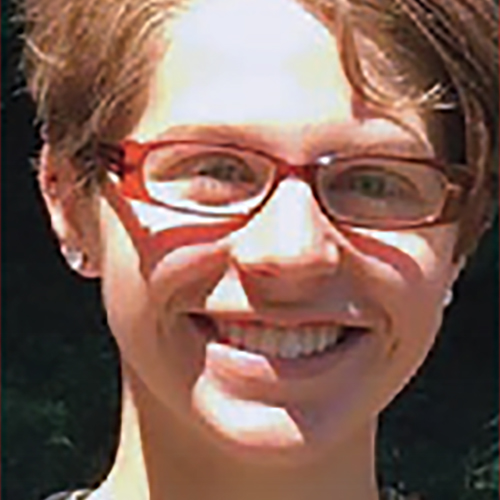 |
Heather Soukup ’16Mechanical Engineering Advisor: Anuradha Annaswamy, Senior Research Scientist, Mechanical EngineeringDirect Supervisor: Milos Cvetkovic, Postdoctoral Associate, Mechanical EngineeringSponsor: New York State Energy Research and Development Authority Dynamic market mechanism for adoption of renewables and demand response in large-scale power systems This research was motivated by the need to evaluate and quantify performance of transactive energy solutions for large-scale adoption. Transactive control has been identified as one of the key enablers of retail electricity markets that provides the means for actively engaging consumers in smart grid operations. Different transactive control architectures have been proposed in recent years ranging from those used for security constrained unit commitment to those that integrate automatic gauge control (AGC) feedback in their dispatch. In this project, we investigated the scalability of one such transactive control architecture called dynamic market mechanism (DMM). DMM differs from other transactive control solutions in that it performs real-time negotiations between market players and the central entity (that could be an independent system operator) to maximize social welfare of the participants while observing the constraints in the system. In this project, DMM is used as a substitute for the optimal power flow-based economic dispatch, which ISO New England uses to run its real-time market. The scalability of DMM was investigated on a large-scale, open source test system known as the Polish grid power system. In these tests, we showed that DMM is capable of performing dispatch with a large number of market participants. |
 |
Mary Thielking ’18Mechanical Engineering Advisor: James Kirtley Jr., Professor, Electrical Engineering and Computer ScienceDirect Supervisor: Karen Tapia-Ahumada, Research Scientist, MITEISponsor: Friends of MITEI Implementation of a laboratory-scale grid-connected microgrid This summer, I helped to begin building a laboratory-scale prototype of a microgrid that will be used to enhance course 6.061: Introduction to Electric Power Systems. A microgrid is a type of distributed energy system that is connected to the power grid via a point of common coupling, meaning that microgrids are used every day to provide electricity to all types of buildings. I enjoyed learning how to simulate physical machines using software, not only because it’s a cool skill to learn, but also because it helped ensure that all of the parts of our model would work together properly before purchasing anything. Studying something as integral to modern society as the power grid was very interesting because I learned some of the many different parts that go into providing electricity, and it amazes me how all of the parts consistently work together so that people have constant access to power. |
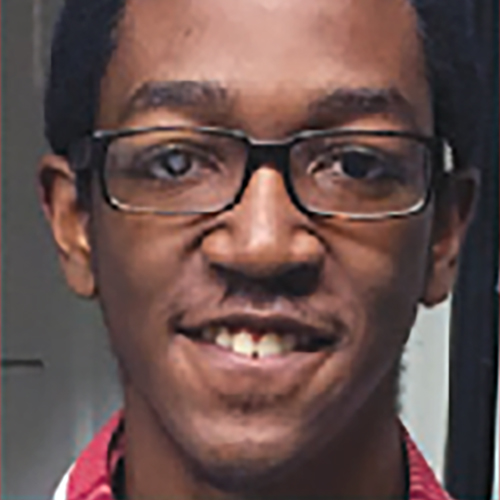 |
Arthur Williams ’18Biological Engineering Advisor: Gabriela Schlau-Cohen, Assistant Professor, ChemistryDirect Supervisor: Ashley Compton, Graduate Student, ChemistrySponsor: Tomas Truzzi Investigating energy transfer rates in photosynthetic complexes The UROP project that I conducted this summer studied how photosynthetic complexes transfer energy with an almost 100% efficiency rate. Many of us have heard about the energy crisis and climate change, and my lab’s research hopes to address these issues by implementing what we all learn about these complexes in modern-day photovoltaic cells. In this respect, I was able to create the nanodiscs that my lab will use to encapsulate and analyze the complexes. Over the summer, I thoroughly enjoyed learning new lab techniques, such as protein purification and lysis, through my energy UROP experience, and depending on time constraints, I may continue with this UROP project in the future. All in all, several topics in energy can be very polarizing, but I am elated that I was able to help the Schlau-Cohen group move the world toward a greener path. |
We're hiring! Learn more and apply